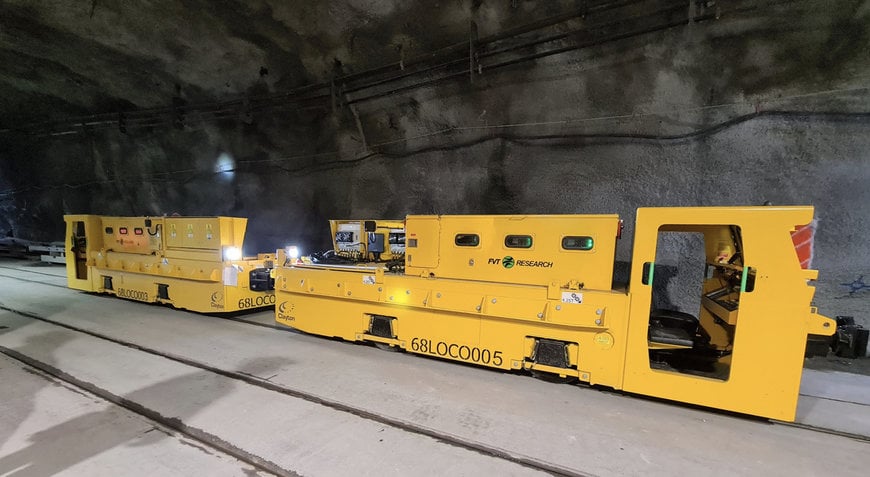railway-international.com
07
'24
Written on Modified on
Clayton Equipment is leading in The Evolution Of Locomotive Battery Technology
The railway industry is actively leading the charge in sustainable and eco-friendly transportation, presenting battery-powered locomotives as a promising solution for a greener future.

Whilst they’re a hot topic and currently experiencing a surge in popularity, battery locomotives are not a recent invention of the 21st century. The dawn of electric locomotives can be traced back to the early Victorian era, a period characterised by rapid industrialisation and scientific curiosity. Despite these initial experiments and advancements, the technology of that era lacked the sophistication required to become commonplace in the rail industry. Fast forward to the 2020s, and the narrative has changed drastically, as hybrid diesel-battery solutions have now gained widespread adoption and usage.
Below we’ll provide a brief history of the locomotive battery, discussing all the key players and pioneers, as well as an outline of where we stand today with current and future trends for battery-operated locomotives.
The Locomotive Battery: A Brief History
The journey first began with Robert Davidson’s 1837 invention of a model electric locomotive, which he followed up with the first entirely battery-powered locomotive in 1842. Named the “Galvani,” this 6-foot-long locomotive was powered by galvanic cells and named in honour of the Italian scientist Luigi Galvani. This early model, though revolutionary — and capable of carrying itself at 4mph and covering a distance of one and a half miles — was limited by the technology of its time and wasn’t considered impressive enough to continue its development.
A little later, in 1859, French physicist Gaston Planté invented the lead-acid battery, which became the first rechargeable battery, laying the foundation for more practical electric locomotives in the future. This groundbreaking invention represented the world’s first rechargeable battery, a stark contrast to the non-rechargeable primary cells that were prevalent at the time. Planté’s lead-acid battery was not only a marvel in the field of electrochemistry, but it also played a crucial role in the evolution of electric power applications.
Jungner & Edison’s Contributions
Fast forward to the early 20th century and the introduction of nickel-iron (NiFe) batteries by Waldemar Jungner and Thomas Edison — and later, nickel-cadmium (NiCd) batteries — marked significant advancements in battery technology for rail applications. NiFe batteries, known for their durability and long lifespan, were well-suited for the demanding conditions of railway operation. Subsequently, NiCd batteries began to see use as well, offering better energy density and efficiency.
TTPL – Thin Plate Pure Lead
Thin Plate Pure Lead (TPPL) batteries mark a significant advancement in the realm of locomotive power sources. Beginning development in the 1970’s, (TPPL) batteries stand out for their unique construction – employing pure lead instead of lead alloys and featuring notably thinner plates. This design not only enhances power density but also ensures a rapid response to load changes, a critical factor in locomotive applications.
TPPL batteries are renowned for their superior performance, including faster charging, extended life cycles, and robustness in extreme temperature conditions. These attributes make them ideal for railway systems seeking reliable, high-efficiency power solutions.
The Advent Of Lithium-ion Batteries
The introduction of lithium-ion batteries in the late 20th century marked a monumental breakthrough in battery technology that propelled its potential applications to new heights. Their higher energy density, efficiency and longer life cycles made them ideal for heavy-duty applications like locomotives. This advancement underlined a significant step towards a more sustainable and technologically advanced method of powering railway transport, aligning with the broader environmental and efficiency goals of the late 20th and early 21st centuries.
Ceramic Batteries – Future Possibilities
Looking towards the horizon of battery evolution, ceramic batteries, or solid-state batteries, present an exciting frontier with the potential to revolutionise locomotive technology. Pioneered from the 1950s onwards, with substantial breakthroughs occurring in recent decades, these batteries replace traditional liquid electrolytes with solid ceramic materials. This shift promises a leap in safety, reducing the risk of fires and enhancing operational stability.
Ceramic batteries also boast a higher energy density, offering the possibility of longer ranges and reduced weight for locomotives. Additionally, their potential for faster charging and longevity could significantly streamline railway operations. As research progresses, ceramic batteries could emerge as a sustainable, high-performance alternative, setting new standards in locomotive battery technology.
Battery Locomotives In The Modern Day
Rail technology has seen continuous innovations in battery technology, leading to significant advancements in locomotive design. One of the most notable developments is the introduction of hybrid locomotives, which ingeniously combine diesel engines with advanced battery systems. This hybridization optimises fuel efficiency and significantly reduces emissions, marking a substantial step towards more sustainable rail transport.
Today’s batteries are not only more efficient but also smarter, integrating seamlessly with sophisticated locomotive systems. Advancements in energy density, faster charging capabilities, and extended battery lifespan are pivotal in this progress.
These improvements are central to enhancing the range and power capacity of battery-powered locomotives, positioning them as strong, climate-friendly contenders in the rail industry.
www.claytonequipment.com

